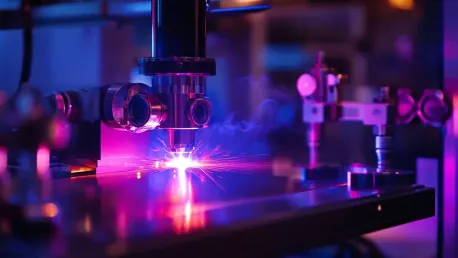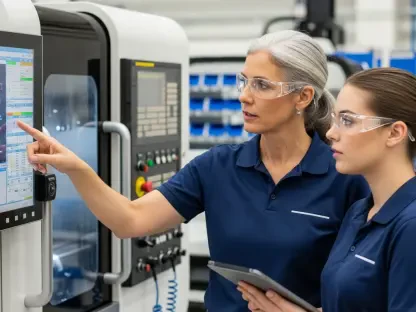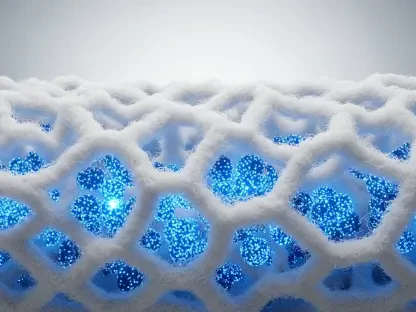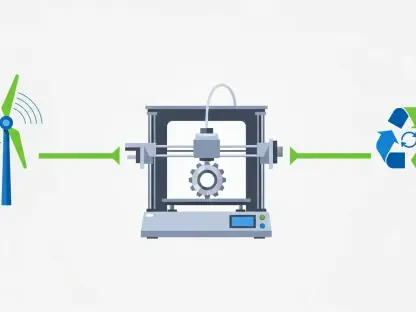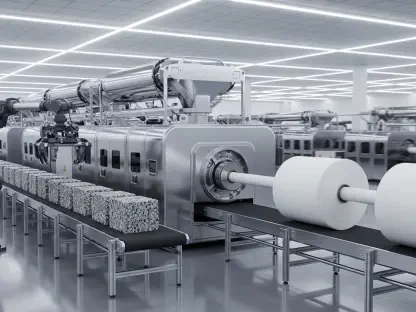Electric vehicles (EVs) stand at the forefront of the automotive industry’s future, driven by the dual imperatives of sustainability and high performance. As the demand for EVs surges globally, the need for efficient and precise manufacturing processes becomes critical. Laser welding has emerged as a cornerstone technology in EV production, offering unparalleled benefits in terms of speed, precision, and versatility. Central to the conversation on e-mobility, laser welding techniques are evolving rapidly, contributing significantly to the efficiency and quality of electric vehicle manufacturing. As the automotive world embraces these advancements, it’s clear that laser welding will play a definitive role in shaping the future of transportation.
Laser Welding: A Critical Manufacturing Process
One of the hallmark advantages of laser welding is its indispensability in the assembly of electric vehicles. This high-tech process is particularly suited for welding battery trays, connecting hairpins, and assembling bipolar plates—all integral components of electric vehicles. The role of laser welding in ensuring the functionality and safety of these components cannot be overstated. The precision afforded by laser welding not only guarantees robust joints but also enhances the overall integrity and performance of EVs.
In addition to its critical role, laser welding offers unmistakable benefits in terms of manufacturing efficiency and precision. The process allows for high-speed and high-precision welding, enabling manufacturers to meet the ever-increasing production demands without sacrificing quality. The exactitude with which laser welding operates ensures that every component meets stringent safety and performance standards. This level of precision reduces post-production inspections and rework, saving both time and resources. By streamlining the production process, laser welding contributes to the accelerated rollout of new EV models, meeting market demands swiftly.
The Power of Material Advantages
Another key factor in the prevalence of laser welding in EV manufacturing is its suitability for welding dissimilar materials. Electric vehicles often rely on lightweight metals such as aluminum and copper to enhance efficiency. Laser welding can seamlessly weld these materials together, ensuring robust and reliable joints. This capability is particularly significant for components within the battery pack, where energy efficiency and material integrity are paramount. The ability to weld such diverse materials efficiently contributes to the overall performance and longevity of EVs.
Moreover, the capacity to weld diverse materials aligns with EV manufacturers’ goal to innovate and improve overall vehicle performance continuously. By leveraging laser welding technology, manufacturers can create lighter, more efficient vehicles without compromising on safety or durability. This technological edge opens up new possibilities for design and engineering, enabling the production of vehicles that are not only more efficient but also more innovative in their use of materials. The flexibility of laser welding supports these advancements, positioning it as an essential technique in the modern automotive manufacturing landscape.
Technological Advancements Boosting Production
Significant technological advancements in laser welding have drastically improved both the speed and quality of production in recent years. Modern laser welding systems boast remarkable efficiency gains, reducing cycle times and significantly enhancing throughput. These technological strides mean that EV manufacturers can ramp up production to meet growing consumer demand without bottlenecks. The incorporation of advanced lasers and precision optics has refined the process, delivering consistent, high-quality welds that are crucial for high-performance EVs.
A key aspect of this technological revolution is the variety of laser types now available. Infrared (IR) lasers are favored for their power and efficiency in welding bulkier components. Meanwhile, green and blue lasers offer precision and minimal spatter, making them ideal for more delicate tasks within the EV production cycle. Each laser type has unique benefits that cater to specific welding requirements, offering manufacturers a versatile toolset to optimize their production lines. The development and deployment of these lasers have broadened the scope of application, allowing for more specialized and effective welding solutions in different areas of EV manufacturing.
Automation and Artificial Intelligence: The Future of Laser Welding
The future of laser welding in EV manufacturing is inextricably linked to advancements in automation and artificial intelligence (AI). The integration of AI into laser welding processes promises to enhance in-process quality control and enable real-time adjustments. This capability will significantly improve the consistency and quality of welds, reducing the need for post-process inspection and rework. By automating these adjustments, manufacturers can focus on optimizing other aspects of production, leading to overall enhancements in efficiency and output.
AI-driven process optimization is another promising frontier. By leveraging machine learning algorithms, manufacturers can predict maintenance needs, optimize cutting paths, and dynamically adjust welding parameters. These advancements can lead to better material utilization, reduced waste, and overall improved production efficiency. The fusion of AI with laser welding technology sets a new standard for precision and reliability in the EV manufacturing process. The predictive capabilities of AI not only enhance production quality but also extend the lifespan of welding equipment, contributing to lower operational costs and higher sustainability in manufacturing processes.
Overcoming Material Challenges
Despite the numerous advantages, laser welding in EV production is not without its challenges. One significant challenge lies in welding the materials used in battery cells. Ensuring proper alignment and avoiding defects are critical to the safety and functionality of the battery pack. The industry is continuously innovating to address these issues. Current solutions involve advancements in laser control and monitoring systems that can detect and correct misalignments in real-time, thereby minimizing defects and enhancing the reliability of battery packs.
Additionally, the unique properties of materials used in EVs, such as their thermal and electrical conductivity, pose specific welding challenges. Laser welding technology is evolving to tackle these challenges head-on, ensuring robust and efficient welds even in complex material combinations. Innovations in laser power modulation and beam shaping have made significant strides in managing the thermal effects during welding, resulting in cleaner, more precise welds. These technological advancements reflect the industry’s commitment to overcoming material challenges and ensuring the highest standards in electric vehicle production.
Driving Sustainability and Cost Efficiency
Electric vehicles (EVs) represent the cutting edge of the automotive industry’s future, driven by the need for both sustainability and high performance. As global demand for EVs grows, efficient and accurate manufacturing processes become increasingly vital. Laser welding has emerged as a key technology in the production of EVs, providing unmatched benefits in terms of speed, precision, and adaptability. Central to the discussion on e-mobility, laser welding techniques are advancing quickly, greatly improving the efficiency and quality of electric vehicle manufacturing. This technology not only enhances vehicle performance but also contributes to the broader goals of reducing carbon emissions and fostering environmental sustainability.
The versatility of laser welding allows for seamless integration into various stages of EV production, from the battery packs to the vehicle’s frame. This adaptability makes it an indispensable tool in the quest for better, faster, and more reliable electric vehicles. As the automotive industry continues to innovate, it’s evident that laser welding will play an essential role in shaping the future of transportation. Moving forward, advancements in laser welding technology are expected to further optimize the manufacturing process, ensuring that electric vehicles remain at the forefront of automotive innovation. Ultimately, laser welding is more than just a manufacturing technology; it’s a critical driver of the future of sustainable transportation.
